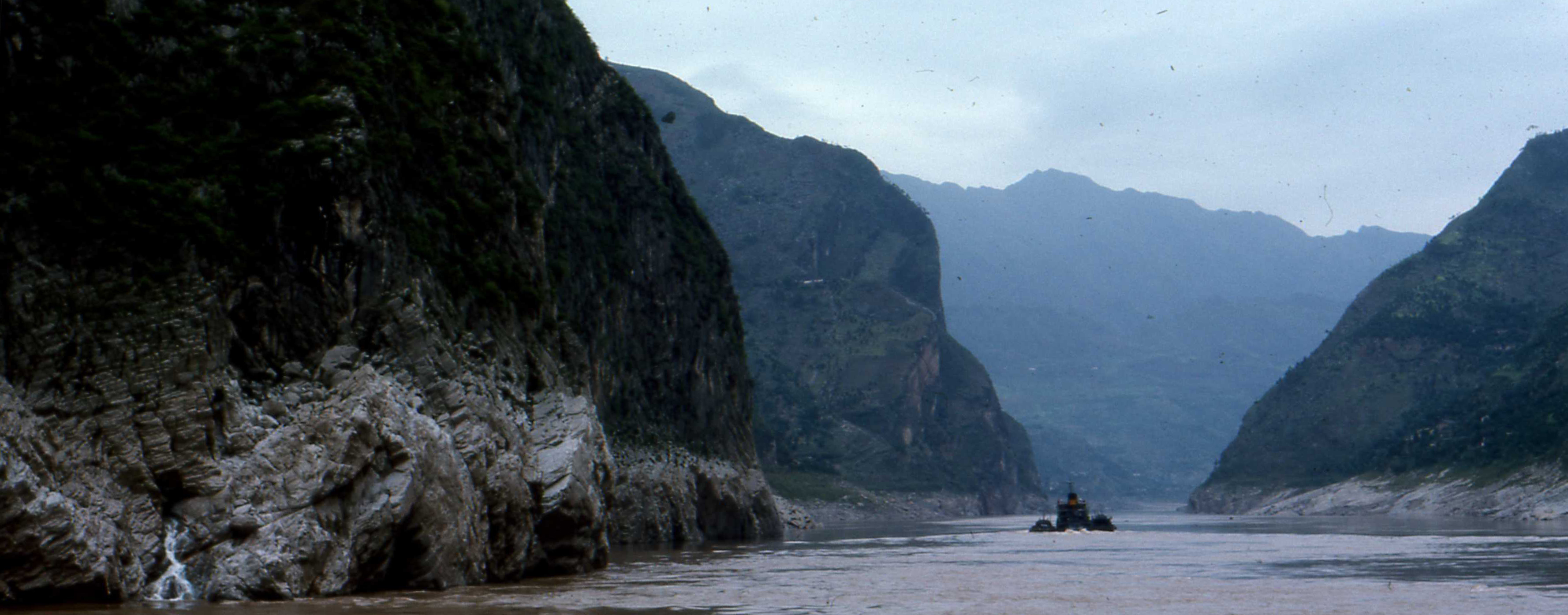1905-1913 Building the Canadian Methodist Mission Hospital, Chengdu
Item
-
Title
-
1905-1913 Building the Canadian Methodist Mission Hospital, Chengdu
-
Description
-
The missionaries involved in the construction of the Canadian Methodist Mission (CMM) teaching hospital between 1905 and 1913 have left a rich record of its construction in both images and text. This is their story.
-
Commentary
-
The earliest CMM medical missionaries, Drs. Omar L. Kilborn and David Stephenson, opened the first dispensary in 1892 but closed it after a few months because it had become so popular that it had kept them from their Chinese language studies (1, 2). Although the CMM had evangelical, medical and educational branches from their beginning in 1891, they did not have full support for their medical initiatives for another few decades (3). This lukewarm attitude prompted Dr. Kilborn to write an appeal for medical missions to foreign mission supporters in Canada in 1919 (4). Notwithstanding, work on the CMM hospital in Chengdu began to take shape in 1994 when the first small hospital building was erected in Chengdu by Dr. Stephenson. However, the building was completely destroyed in the anti-foreign riots of 1895 (2).
The Boxer Rebellion again deterred the medical work in West China. In 1900, the missionaries were evacuated to the coast. When they returned, Dr. Robert Ewan was assigned the medical work, while Dr. Kilborn was given oversight of the evangelical work. A second hospital was completed in 1897 (2). However, in 1902 the Boxers again created disturbances in Sichuan, so that it was only after 1903 that Dr. Ewan was able to grow the medical work without interruption (1).
A larger hospital with modern equipment got its start in 1904 when Dr. Kilborn purchased property on Chengdu’s Sichengci Street. Dr. Kilborn, who had been reassigned to medical work while Dr. Ewan was on furlough, also secured a substantive grant for the hospital from a prominent Chinese official (1). Simultaneously, Dr. Ewan launched a fundraising campaign in Canada through the Young People’s Forward Movement (YPFM). Led by Dr. Stephenson, who had retired from active mission service, the UPFM targeted Methodist youth in Sunday Schools and the Epworth League. Stephenson published a brochure asking children and youth to purchase “bricks” to support building the hospital (5). Rev. Newton Bowles recalled in 1920 that “To the faith and hard work of Dr. R.B. Ewan is due in large part the securing of such a splendid building” (6).
After Dr. Ewan returned from furlough, he was given charge of building the hospital according to plans he had drawn up. The foundations were laid in 1907, and he personally superintended its construction from managing labor and overseeing building to purchasing equipment (1, 2, 6). In his work report of 1907-1908, Dr. Ewan noted that the stone had to be brought from about 40 miles away in wheelbarrows (7). He was helped by an unnamed Taoist priest who served as his head mason, and assisted with numerous other tasks, such as delivering messages during times of upheaval (8).
The stress and physical endurance required of this job resulted in a degeneration of Dr. Ewan’s health. In 1909 he suffered a “break-down” and had to be replaced by Dr. Stewart Allan for several weeks. In 1910, Dr. Sheridan arrived in West China and was appointed to medical work in Chengdu, which relieved Dr. Ewan of medical duties so that he could devote full time to the hospital (1).
The work continued tirelessly from then until the 1911 Republican Revolution, which ended the imperial rule in China forever. In September of 1911, an incident in Sichuan over the proposed railway to Chengdu was one of the triggering factors of the revolutionary agitation. As a result, from Sept. 6th to Nov. 17th, local Chinese authorities ordered all missionaries to stay confined within their compounds because they could not guarantee their safety. The uncompleted CMM hospital served as the primary detention center for the missionaries (9, 10). When they were finally released, the British and American consuls ordered them to evacuate to the coast.
After the new Republican government had been established, it came time for the missionaries to return to West China. However, the mission board determined that Dr. Ewan must return to Canada to revive his frail health. They assigned Dr. Charles Service to take over the medical work in Chengdu (1). While Service undertook medical duties, CMM’s “builder,” Walter Small, was assigned to complete the hospital, which at this point entailed mounting the windows and finishing the interior carpentry, as well as filling it with modern medical equipment (3). The CMM hospital was finally completed and an opening ceremony was held on January 30th, 1913 (7).
-
Event Date
-
1906 - 1913
-
References
-
1. Service, Charles W. 1920. “Medical Work.” In Our West China Mission. Frederick Stephenson, ed. Pp.378-400. Toronto: The Missionary Society of the Methodist Church, Young People’s Forward Movement.
-
2. Bond, George J. 1911. Our Share in China and What We are Doing with It. Toronto: Young People’s Forward Movement.
-
3. Service, Elizabeth. 2023. “A Canada-China Connection: How the Service Family and
Their Transnational Networks Shaped Sustainable Health Care in Sichuan.” In Vic in China: 1900s Charles and Robina Service and Family
-
https://library.vicu.utoronto.ca/exhibitions/vic_in_china/sections/missionaries_and_mission_stations/1900s_charles_robina_service_and_family.html
-
4. Kilborn, Omar L. 1919. Heal the Sick: An Appeal for Medical Missions in China. Toronto: The Missionary Society of the Methodist Church.
-
5. Stephenson, Frederick. 1905. New Hospital Chentu, West China. (Brochure, Willmott Family Archives).
-
6. Bowles, Newton. 1920. “Chengtu.” In Our West China Mission. Frederick Stephenson, ed. Pp.168-176. Toronto: The Missionary Society of the Methodist Church, Young People’s Forward Movement.
-
7. Brown, Patricia. 2020. Western Medicine in Sichuan. The West China Mission 1(2): 2-22.
-
8. Photograph notations, Ewan Family Archives.
-
9. Donnelly, Mary Rose, and Heather Dau. 1992. Katherine Boehner Hockin: A Biography. Winfield, BC: Wood Lake Books.
-
10. Service, Grace 1989. Golden Inches: The China Memoir of Grace Service. John S. Service, ed. Berkeley: University of California Press.
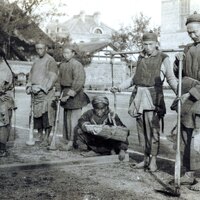 Workers Pounding a Tennis Court 1
Workers Pounding a Tennis Court 1
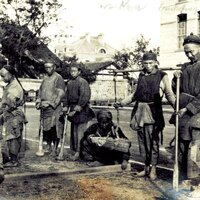 Workers Pounding a Tennis Court 2
Workers Pounding a Tennis Court 2
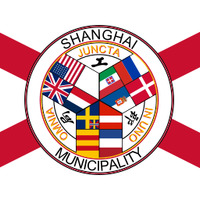 1911-1912 Nationalist Revolution Evacuation
1911-1912 Nationalist Revolution Evacuation
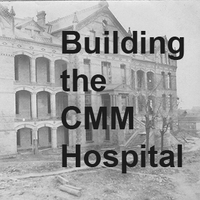 CMM Hospital Graphic.jpg
CMM Hospital Graphic.jpg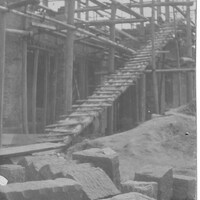 Building the CMM Hospital in Chengdu
Building the CMM Hospital in Chengdu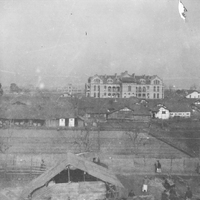 Canadian Methodist Hospital From Chengdu City Wall
Canadian Methodist Hospital From Chengdu City Wall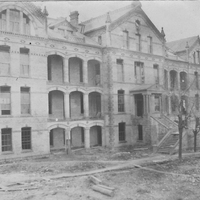 Canadian Methodist Hospital Under Construction
Canadian Methodist Hospital Under Construction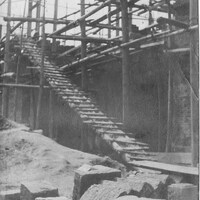 Scaffolding During the Building of the CMM Hospital
Scaffolding During the Building of the CMM Hospital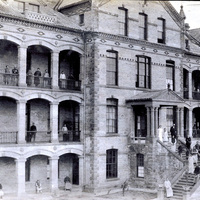 The Chengdu CMM Hospital with People in Front
The Chengdu CMM Hospital with People in Front The CMM Chengdu Hospital with People in Front
The CMM Chengdu Hospital with People in Front